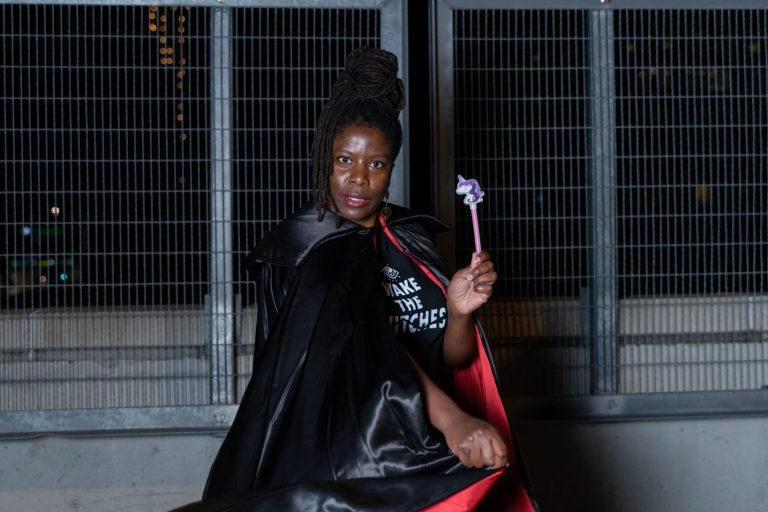Does Waterloo Region have an authentic arts and culture scene? Glodeane Brown, who you may know as Culture Fancier, doesn’t think we do — yet.
Brown spends a lot of time thinking about this question. The rest of her time she’s more than holding up her end of the cultural bargain. She’s the general manager of Contemporary Art Forum Kitchener and Area (CAFKA), a blogger, lifestyle ambassador and diplomat for everything cool and creative around town.
She, more than anyone, wants the region to be a well-known cultural destination. But even if she had a magic wand she could wave to transform Waterloo Region into the next San Francisco, Portland, or Austin, she wouldn’t want to.
“Kitchener is always trying to be something else. We’re trying to be the Silicon Valley of the north, or we could be this or that, but it’s never really trying to be just itself,” she said. “I don’t know if that’s a good recipe for trying to grow.”
Brown lives in the heart of the construction boom at King St. and Victoria Ave., and sees the region growing in at least that regard. But growing a scene isn’t nearly as simple as building a condo.
“That happens all organically, right,” she said. “You can’t just create a scene. It happens over time, you can’t just be like we’re going to Graffiti Alley or whatever. Honestly, I don’t know who we are. I feel like that’s something that we all have to work on as a region.”
Coming from Brown, that’s an accusation and a call to action.
She isn’t eager to badmouth anyone in the tech industry or dig anyone’s grave by naming names or picking fights. But as someone who is all talk and all action, she’s an unimpeachable authority on who is really carrying water working towards an authentic identity.
“You look at who is celebrated, usually white men in tech. They’re hailed as business leaders, disrupters, innovators. A friend of mine said, ‘this region loves to honour white male mediocrity.’ And it’s funny because I think a lot of the people working in tech are also artists on the side.”
It’s that hidden potential that Brown surfaces, either through the profiles on her website, her social media, and her work at CAFKA. She has stories for days on the personalities that make art in the community, but that’s just gossip. What about the big picture?
“Having worked here a long time, this area is very conservative, very white,” she says. “The German settler brand is very strong here,” said Brown.
Brown works with artists from all different backgrounds and identities, so she’s heard the stories, and doesn’t bother justifying why that might be an issue broadly. But for the arts?
“If you feel safe in a place, you’re more comfortable making something that’s a little more subversive or daring. The kind of art that builds a reputation,” she said. “Artists need a base of people interested in their work, if there’s any hate or bigotry it would be hard to stay in a place and create.”
She’s optimistic though. “We’re slowly starting to see people being more open to history beyond or prior to settlement,” she said.
Brown could get into all of the tactics of building a truly vibrant creative culture that looks to the future, but that’s her day job. Big picture things like financial support, more spaces to create and fair rent — things mostly out of her control are what we need to discuss as a community.
“Our city leaders, developers, business people use the arts as a way to attract talent to a place,” Brown said.
“You always hear them talking about things like, ‘a thriving, vibrant arts community.’ The recent downtown beautification — I was part of that through work, so I’m not going to mouth-off about that too much, but where do people think this comes from? Are the artists actually getting the support they need?”
For Brown, the cruellest irony is that when an artist wants their work to be seen by the public for free, it’s then used in thirsty real estate marketing as proof of culture.
“Most of the units are owned by investors from Toronto. They’re purchasing because they know that Kitchener is rapidly gentrifying. This region is already too expensive to live in,” she said. “I’m almost certain that most of the people doing this artwork downtown don’t live downtown because it costs too much to live here.”
In the end maybe none of this matters. COVID-19’s true impact on the region and its culture is only just beginning. Empty offices, closed restaurants, and empty investment properties. Maybe something is about to change.
“People from the GTA are probably going to be moving here soon,” Brown said. “So maybe we will be getting that Toronto vibe? Just like everyone wanted, to be like another place.”

